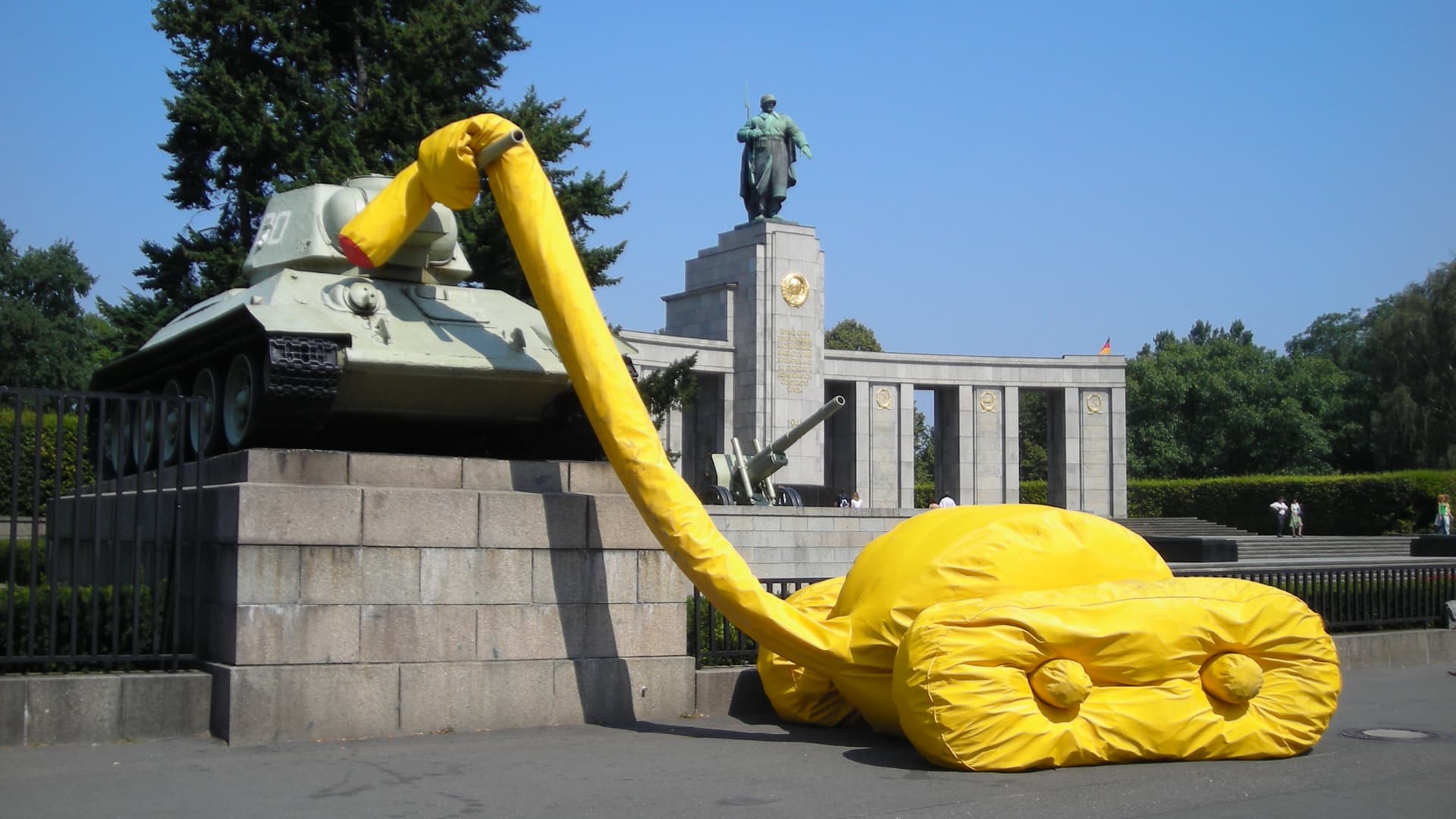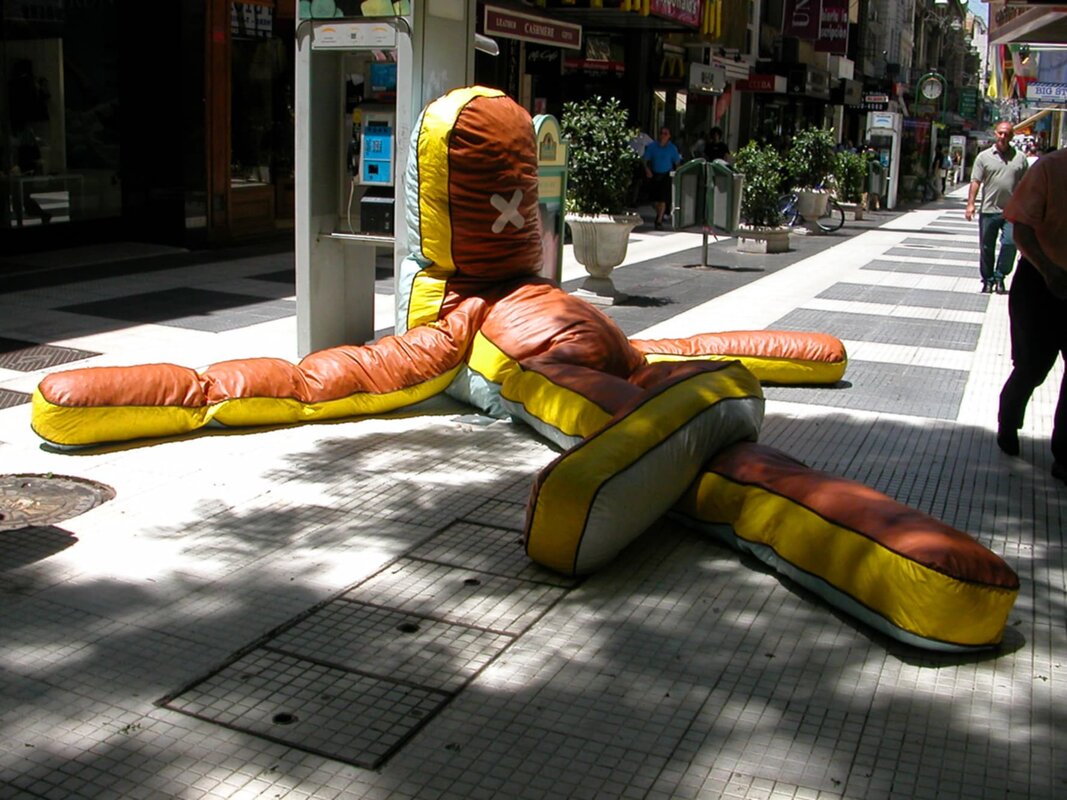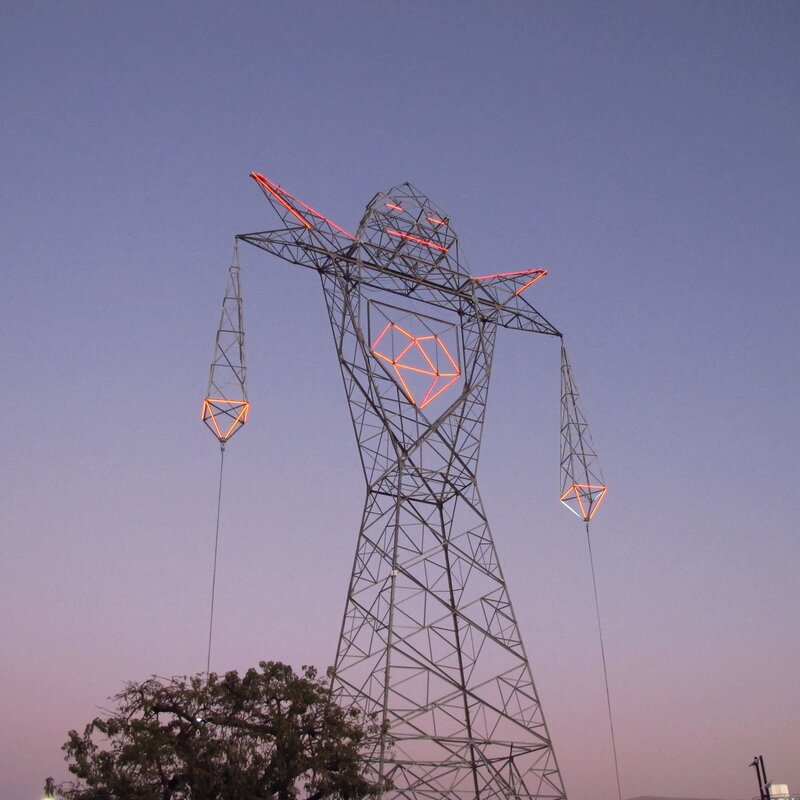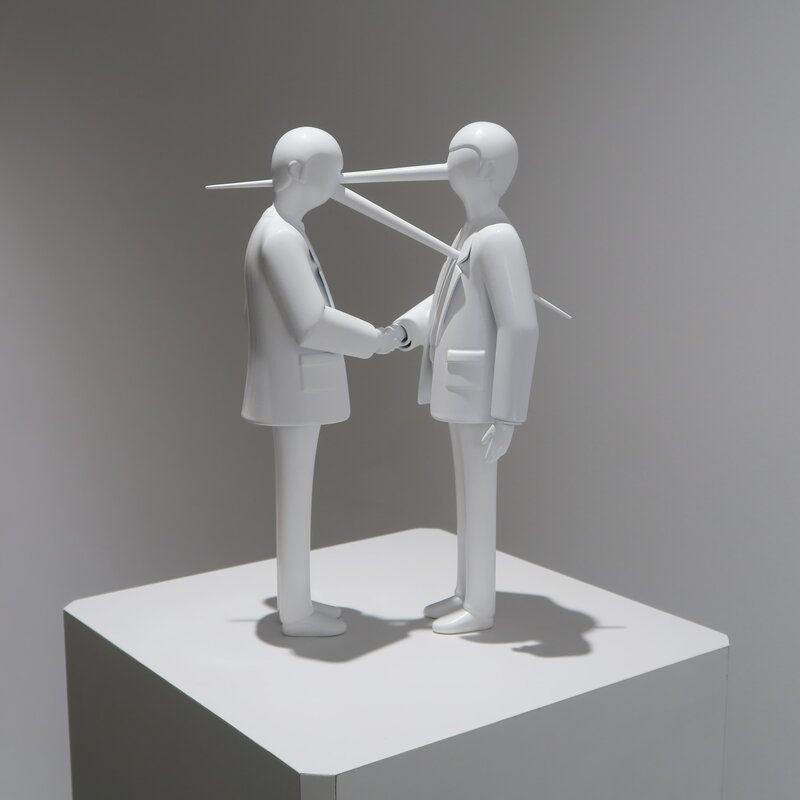
Doma: Losing Public Space and Natural Connection
Doma is an artist collective formed in 1998 in Buenos Aires, currently run by Orilo Blandini and Julian Manzelli. With their origins in urban art, they have always situated collaborative work, experimentation and DIY at the axis of their practice. Doma have exhibited their work around the world in cities such as Berlin, Cologne, Los Angeles, Moscow, Santiago de Chile, São Paulo and Buenos Aires.
Pictoplasma: Is there something you can identify as a common thread running through your work, by way of introduction?
Doma: The work of Doma has a social commitment and is inspired by what is going on in the world; the reality, especially the worst things of reality, the things that are not really nice. And we try to do something with it.

When you began twenty years ago, you quickly found your way of bringing graphical images to the street. How did that happen?
We studied at the public university in Buenos Aires where we had a lot of information but no tools. When you study at a public university, you have to be able to do many things yourself, nobody will do much for you. We started to do things and bring them to the streets and public places. The public space in 2001 in Argentina was in total anarchy. It was the best place ever for young people, because you could do whatever you wanted. I have the best memories of that time. No police, no state, no government, nobody – so we spent the whole day on the street. We could really do what we wanted. No money, no job; the only thing we could do was join friends and do things together. We got the public space because of the crisis. The doors were open. Even the police came to us and said, ‘cool guys’, because they couldn’t do much with us. At that time, all the art galleries and institutions were totally different from today, really structured and old-school. Public space was the place to be at that moment and it’s probably the same again now, because we are losing that space again.

Let us turn to the exhibition Naturaleza Muerta at Centro Cultural Recoleta in Buenos Aires in 2018.
The exhibition is a trip through life, but starting from death. We believe we are kind of dead at the moment. You enter the exhibition through an installation of coffins and throughout the exhibition you cleanse yourself of guilt and are reborn at the end. We were trying to push people to question if they want to be part of this life; the life they saw in the exhibition.
The idea and all the artworks for this exhibition are part of a reaction and catharsis. We started seeing how our environment, how our friends and families, started to change with the screens and all the platforms that are proposed to us. Today, we are losing the natural connection between people, we communicate everything through technology. We think that’s sad.

One work, Políticos, started with a hand-drawn sketch that was more like a cartoon-style character. But for the final piece, we wanted something more realistic, more human-like. We tried things out but didn’t like them. Finally, we mixed the first cartoon character with human proportions, and that was satisfying to us, as we kept the essence of the first drawing. The piece represents what politics is today. We can’t find one politician in the world that we like, but they are taking care of this crazy situation. We are not in good hands.
Interview by Pictoplasma on the occasion of Pictoplasma In Isolation, 2020
- 303 views
- 0x empathy